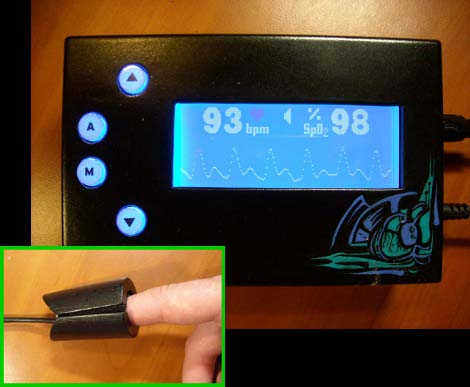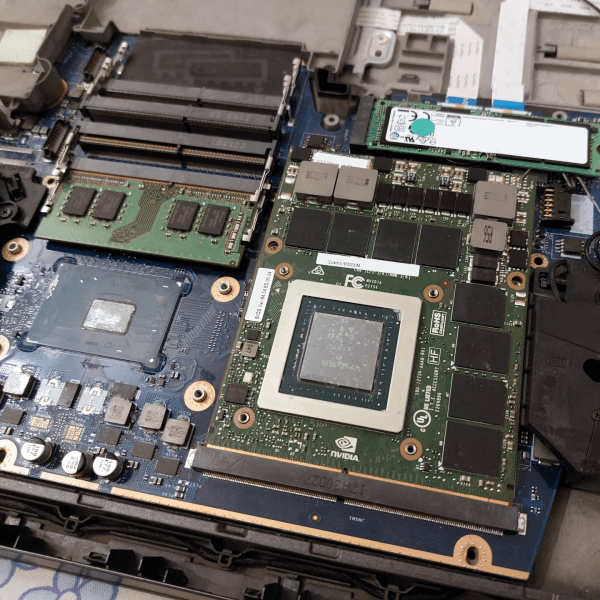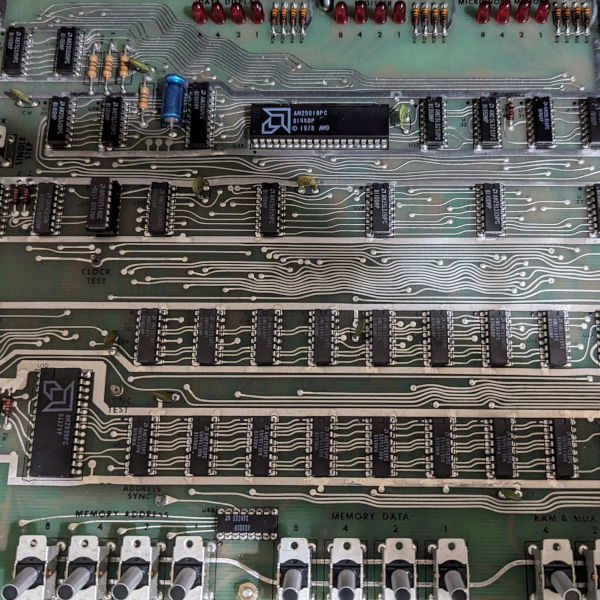This pulse oximeter turned out very nicely. It is based around a Freescale microcontroller and detects pulse as well as oxygen saturation in your blood. The sensor is made of two wood pieces and allows two wavelengths of light to be shined through your finger. A sensor picks up the light on the other side of your stubby digit and the readings are compared to calculate saturation. Check out the finished project after the break.
We saw an Arduino-based oximeter a few months ago. These kind biometric hacks are rare around here. If you’ve got a well documented project don’t forget to tell us about it.
[Thanks Michael]

















Sounds like a hypochondriac modders wet dream.
Hypochrondria? What is it? I THINK I HAVE THAT!
I bet when a hospital buys one of these it costs £several thousand.
Hey, thanks neat. But I gotta ask; why the alarm at 75bpm? Or was that just to demonstrate it supported an alarm?
Er… That should have been “Hey, thats neat”. I blame the proximity of the keys on my keyboard!
@Drakonite
Alarm at 75bmp was just a demonstration ;-).
How is it calibrated? Commercial devices use look-up tables derived from volunteers, what about this one? This, to me, seems the greatest challenge for a home-built pulse oximeter.
In this case no blood was spilt during tests :P. But actually it uses empirical look-up tables found in some medical papers.
direct link please, no download with google translate
tim: http://www.elektroda.pl/rtvforum/topic1655378.html
could it be modified to detect carboxyhemoglobin (aka CO saturated) ? could be very useful as a quick test for CO poisoning..
This was on Hackedgadgets first, btw.
@anon
I bet it was on http://www.elektroda.pl/rtvforum/topic1655378.html first, tbh.
now please find a way to do just this exactly, but testing for blood sugar.
the pharmaceutical companies don’t care enough about their patients to do this quickly so diabetics are sticking themselves all the friggin’ time.
They don’t care? Or it just isn’t as simple as that?
It seems to me that blood glucose monitors is a commodity game. One monitor is a lot like the next. If there was a way to measure blood glucose without “sticking yourself” one of these companies would figure it out, patent it, and then corner the market. Because after all that would change things by creating a monitor which was different from the rest.
@bothersaidpooh
I very much doubt it can reliably detect CO. The sensor works by measuring the absorbency spectrum of the blood. Oxygenated hemoglobin appears much redder than deoxygenated. Unfortunately, CO binds in place of O2, also giving it a red colour.
CO binds much better than O2, so it tends to stay in the blood longer, making it appear a bit more oxygenated than normal to this sensor. Maybe if you had a baseline to work off of, but it can’t distinguish CO poisoning from more oxygen, like from hyperventilation, or an oxygen tank.
“Shined” is what was done to a formerly tarnished piece of metal. “Shone” is what light did through a translucent material.
I know, English can be pretty weird…
Cool project, BTW :P
Projected is when light is transmitted out through something, normally item of technology or a light bulb. “Shone” is when you use light to illuminate something to someone:-) ha ha kidding
@bothersaidpooh
As Rachel said, CO bonds to the hemoglobin in the place of O2 and gives it a very red, flushed color. If someone is exhibiting Signs and Symptoms of CO poisoning (skin very flushed, Headache, Nausea, Malaise, altered mental status, etc..) they will also have an SPO2 reading of 100%. At the current time I know of no SPO2 meter than can tell if someone has CO poisoning…but hopefully the healthcare professional treating you will recognize the distinct signs and symptoms and treat you with O2 therapy accordingly.
So, the short and sweet answer is no, not that I know of.
A Pulse CO-oximeter is basically the same as an
Pulse Oximeter but uses more different light colours. According to the german wikipedia they use
seven different colours.
The english article
http://en.wikipedia.org/wiki/CO-oximeter
states only several wavelength.
Klaus Leiss
Speaking as a trained emt and firefighter, AND as an exercise nut, thats a pretty useful hack. i know that i’d love to have an oximeter on hand when i’ve been working out.
definitely more helpful than that $40 dollar heart monitor watch. peice’o’crap.
but as a gamer, i was wondering how hard it would be to output the info and incorporate it into a homebrew game..sony’s been working on something like that but it’ll be a while before it hits the market.
Alright that’s pretty awesome. As a FF/Paramedic I always like hacks that involve the healthcare field.
do you have any idea how to make a pulse oximeter SIMULATOR?
hai there, love the concept of spo2, using arduino its ?could u share source code?can email to me
where is a code for arduino?
shine 1
[ shahyn ]
verb (used without object), shone or shined, shin·ing.
1. to give forth or glow with light; shed or cast light.
2. to be bright with reflected light; glisten; sparkle.
verb (used with object), shone or shined, shin·ing.
3. to cause to shine.
4. to direct the light of (a lamp, mirror, etc.): Shine the flashlight on the steps so I can see.
***
It turns out they’re not only both correct, they’re the same word. ;)
Boots used to sell a device with wires that you put up your nose to treat hayfever.
The emitter is dual wavelength and very close to the ones used for pulse oximeters.
Maybe something people can hack? Add a capacitor sensor across the diode pins for temperature feedback.
The delicate part is the receiver as it has to have a “flat” response between 590 and 950nm.
In principle the sensor from a PS3 BRIR laser may work, as this diode is broad band.
If I found this while searching for pulse oximetry others might. So 12 years late here’s another comment. Haemoglobin reacts with several different chemicals and changes colour as a result. Oxygen is one. Carbon monoxide and cyanide are two more. The resulting colour depends on just what has attached itself. Given enough data-points you should be able to distinguish the effects of any of them and measure them independently. Just what wavelengths you might need to monitor I’m not sure. Annoyingly when I published a patent on LED spectrophotometry in 1978 nobody was interested. Ho hum.